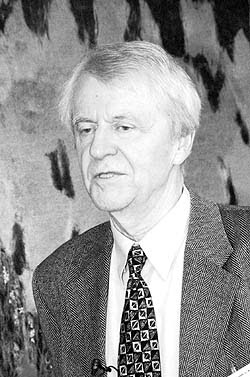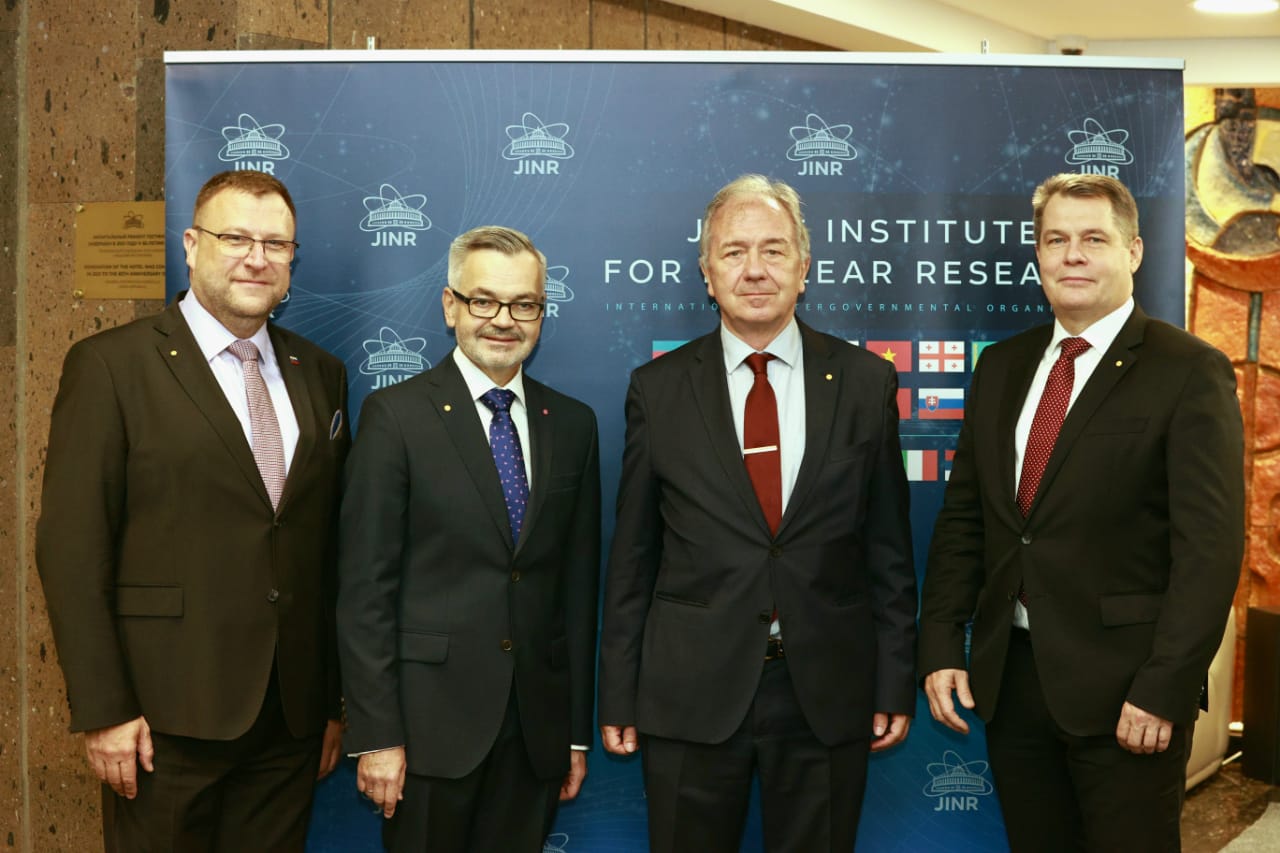Light isovector resonances in pi(-) p -> pi(-) pi(-) pi(+)p at 190 GeV/c
Autor
| Aghasyan M. | INFN, Trieste |
| Finger Miroslav, prof. Ing. DrSc. | Matematicko-fyzikální fakulta UK v Praze |
| Finger Michael, M.Sc. CSc. | Matematicko-fyzikální fakulta UK v Praze, SÚJV Dubna |
| Slunečka Miloš, Ing. | Matematicko-fyzikální fakulta UK v Praze, SÚJV Dubna |
| Smolík Jan, Mgr. Ph.D. | Fakulta jaderná a fyzikálně inženýrská ČVUT |
| Taševský Marek, Mgr. Ph.D. | Fyzikální ústav AV ČR |
| et al. | různé instituce |
Rok
2018
Časopis
Physical Review D, 98 (9), 092003
Web
Obsah
We have performed the most comprehensive resonance-model fit of pi(-)pi(-)pi(+) states using the results of our previously published partial-wave analysis (PWA) of a large data set of diffractive-dissociation events from the reaction pi(-) + p -> pi(-)pi(-)pi(+) +p(recoil) with a 190 GeV/c pion beam. The PWA results, which were obtained in 100 bins of three-pion mass, 0.5 < m(3 pi) < 2.5 GeV/c(2), and simultaneously in 11 bins of the reduced four-momentum transfer squared, 0.1 < t'< 1.0 (GeV/c)(2), are subjected to a resonance-model fit using Breit-Wigner amplitudes to simultaneously describe a subset of 14 selected waves using 11 isovector light-meson states with J(PC) = 0(-+), 1(++), 2(++), 2(-+), 4(++), and spin-exotic 1(-+) quantum numbers. The model contains the well-known resonances pi(1800), a(1)(1260), a(2)(1320), pi(2)(1670), pi(2)(1880), and a(4) (2040). In addition, it includes the disputed pi(1)(1600), the excited states a(1)(1640), a2(1700), and pi(2) (2005), as well as the resonancelike a(1)(1420). We measure the resonance parameters mass and width of these objects by combining the information from the PWA results obtained in the 11 t' bins. We extract the relative branching fractions of the rho(770)pi and f(2)(1270)pi decays of a(2)(1320) and a(4)(2040), where the former one is measured for the first time. In a novel approach, we extract the t' dependence of the intensity of the resonances and of their phases. The t' dependence of the intensities of most resonances differs distinctly from the t' dependence of the nonresonant components. For the first time, we determine the t' dependence of the phases of the production amplitudes and confirm that the production mechanism of the Pomeron exchange is common to all resonances. We have performed extensive systematic studies on the model dependence and correlations of the measured physical parameters.
Příklad citace článku:
M. Aghasyan, M. Finger, M. Finger, M. Slunečka, J. Smolík, M. Taševský , . et al., "Light isovector resonances in pi(-) p -> pi(-) pi(-) pi(+)p at 190 GeV/c", Physical Review D, 98 (9), 092003 (2018)


 MINISTR ŠKOLSTVÍ KE SPOLUPRÁCI ČR S SÚJV
MINISTR ŠKOLSTVÍ KE SPOLUPRÁCI ČR S SÚJV INTEREST JINR, Wave 6
INTEREST JINR, Wave 6 Zemřel profesor Ivo Zvára
Zemřel profesor Ivo Zvára Výzva k podávání žádostí na projekty řešené ve spolupráci s SÚJV (Projekty 3+3)
Výzva k podávání žádostí na projekty řešené ve spolupráci s SÚJV (Projekty 3+3)  Výzva k podávání žádostí na Granty zplnomocněného představitele vlády ČR v SÚJV
Výzva k podávání žádostí na Granty zplnomocněného představitele vlády ČR v SÚJV Velvyslanec ČR v RF navštívil SÚJV
Velvyslanec ČR v RF navštívil SÚJV INTEREST JINR, Wave 5
INTEREST JINR, Wave 5 Ruské vízové centrum
Ruské vízové centrum Pracovní pobyty ČR - SÚJV 2022
Pracovní pobyty ČR - SÚJV 2022